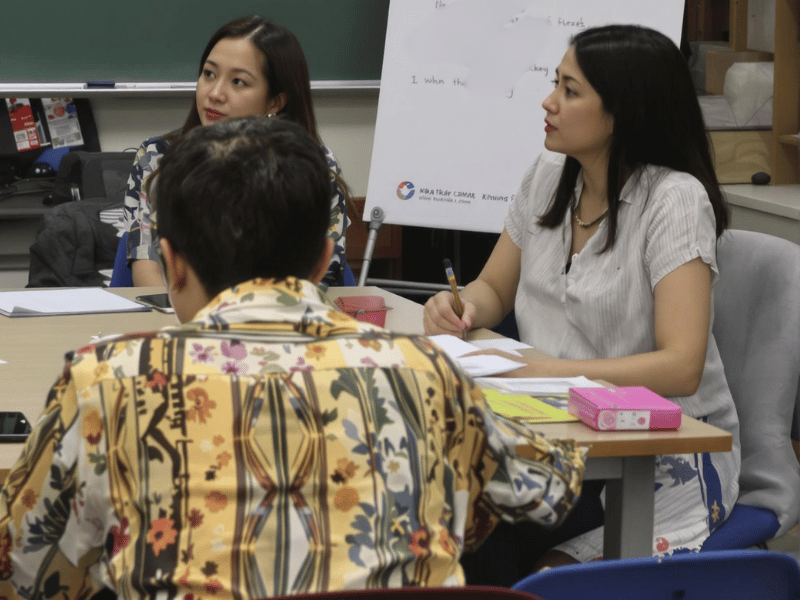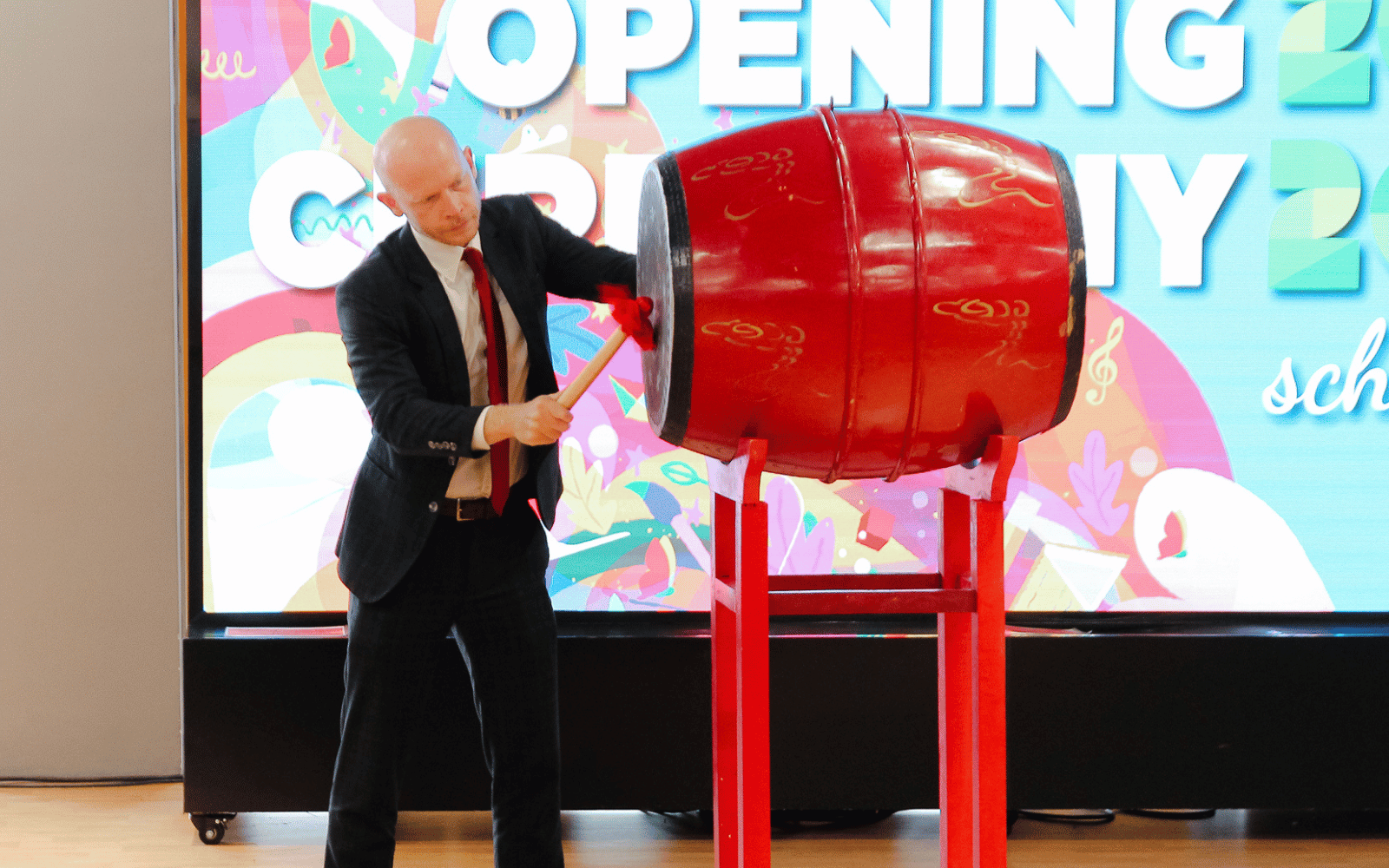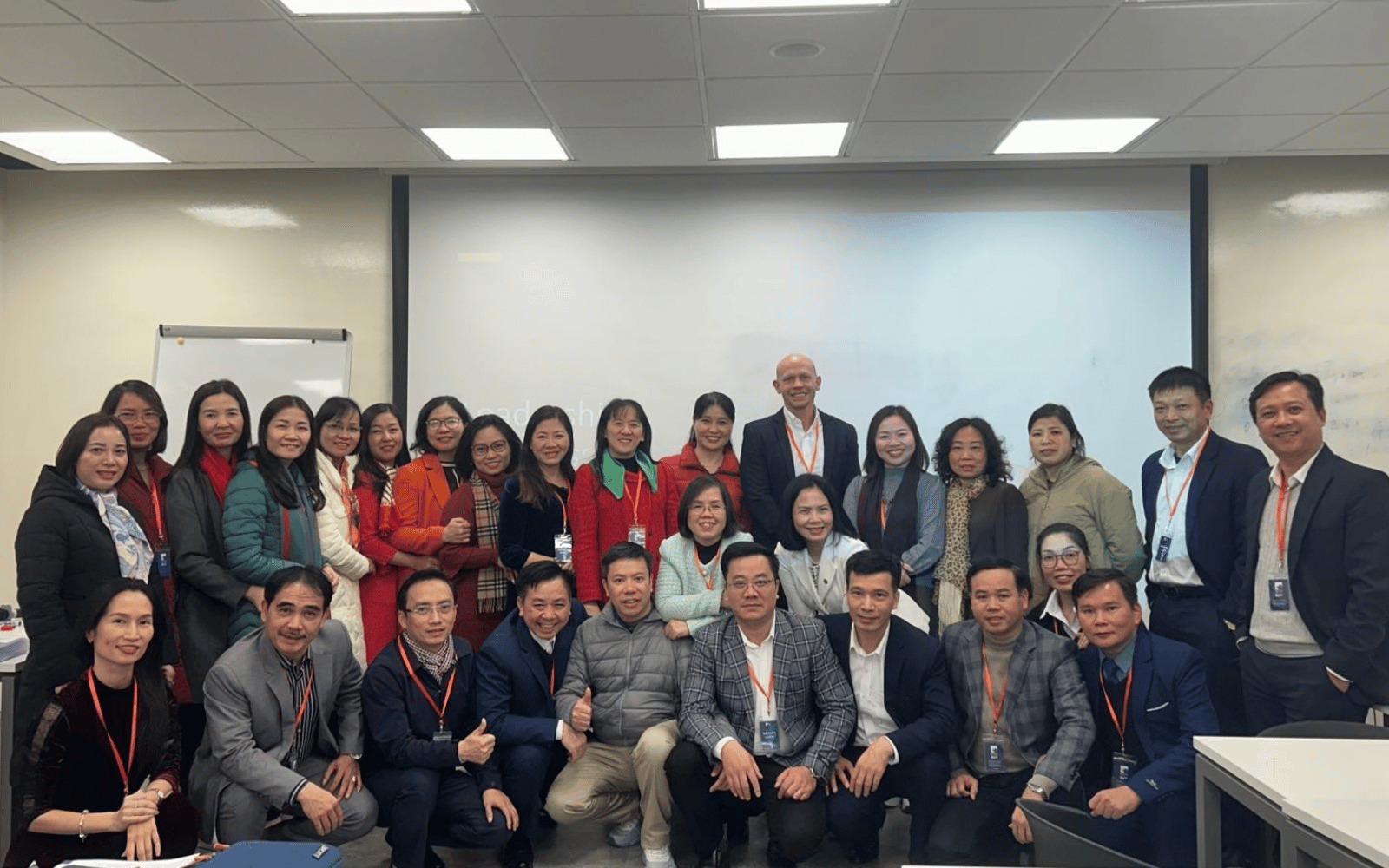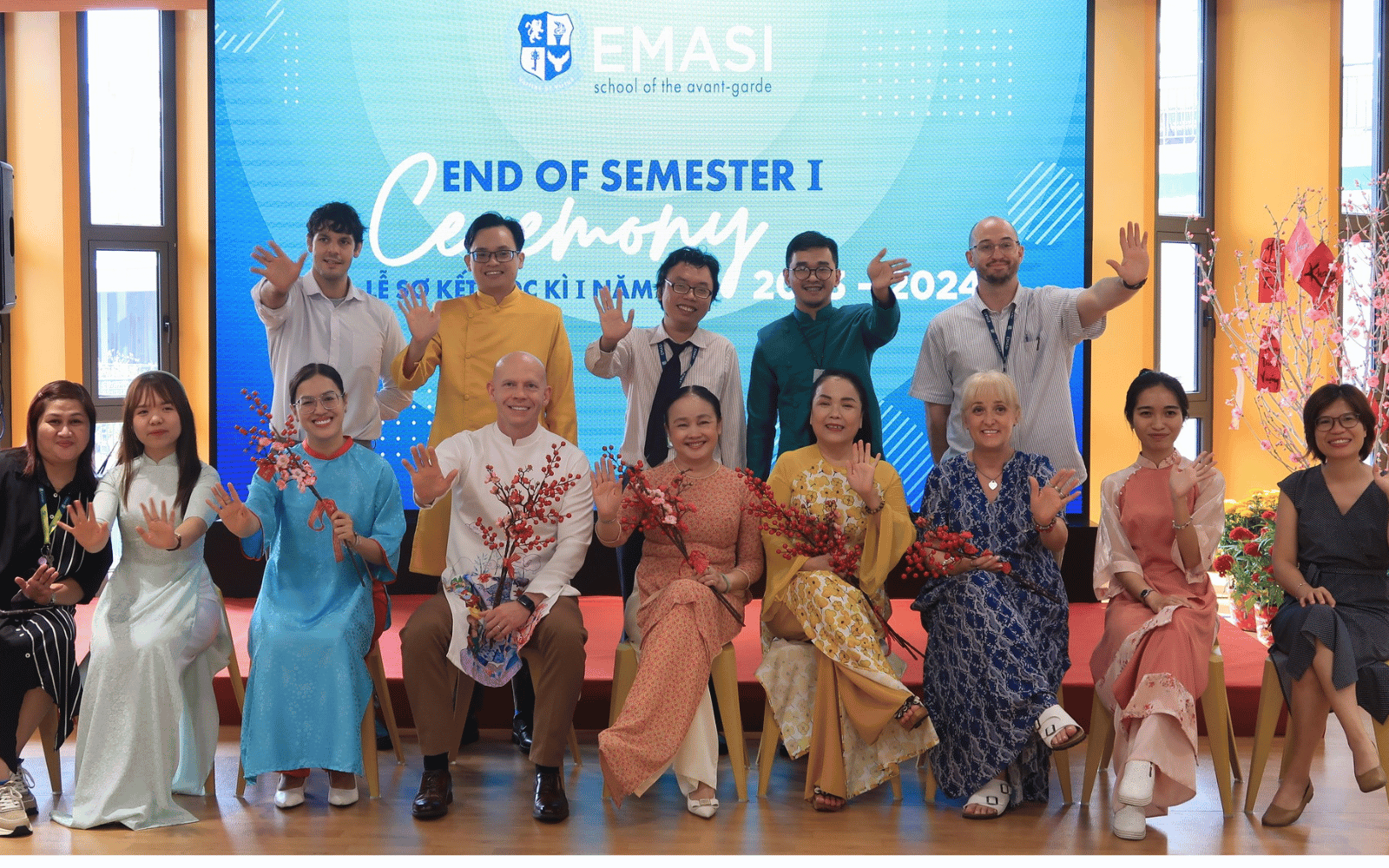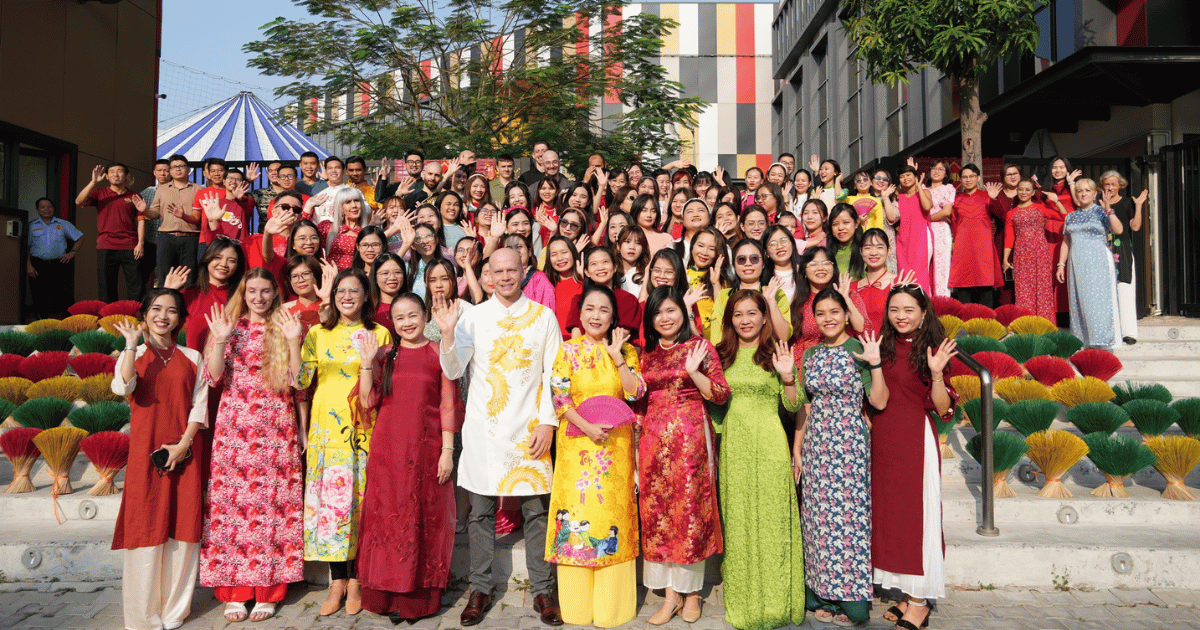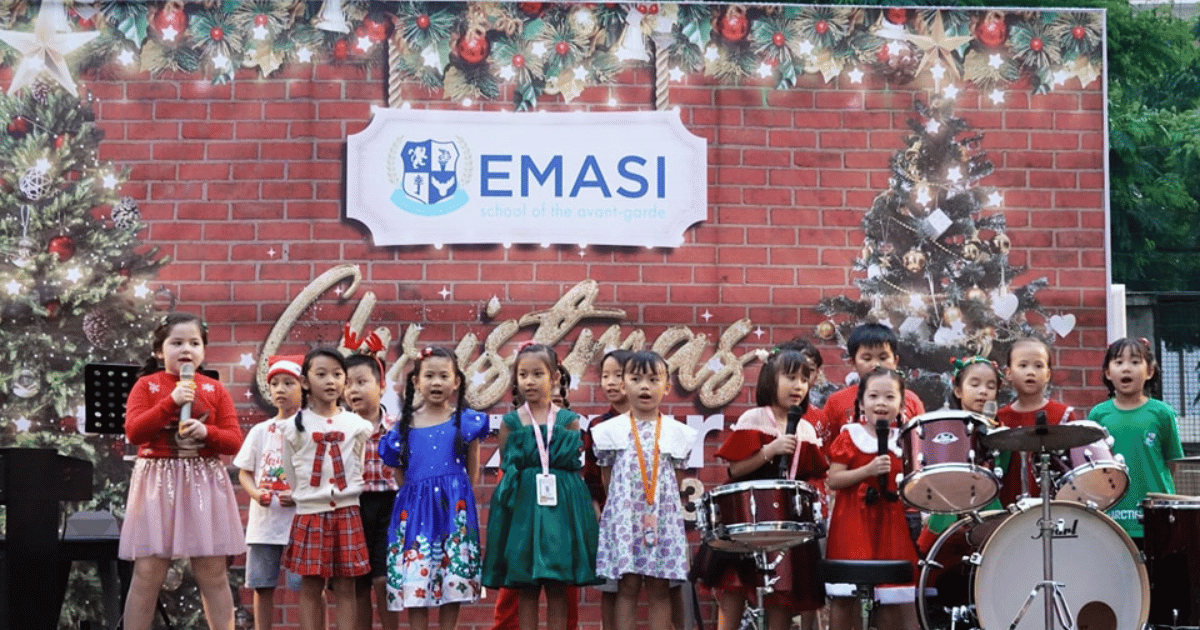Challenges & Rewards of Bilingual Education Work Environment in Vietnam
What to Understand About Bilingual Education in Vietnam
If you are an educator considering working in a bilingual education environment in Vietnam, it is good to have an idea what to expect.
Vietnam is a country that offers rich rewards - both personal and professional - for sincere teachers looking to make a difference.
But there are also challenges to be aware of.
Language barriers will test your ability to effectively communicate with students and colleagues.
Cultural differences will require you to adapt your teaching strategies to accommodate diverse perspectives.
Classroom management will demand your attention as you navigate a dynamic learning environment.
Teacher training and qualifications will play a crucial role in your success.
Adaptation of the curriculum will be necessary to meet the needs of bilingual students. Balancing language acquisition and content learning will be a delicate task.
Building strong teacher-student relationships will be vital to fostering a supportive and engaging learning environment.
Community involvement and support will be essential in navigating the unique challenges of this educational setting.
Finally, addressing individual student needs will require your attentiveness and flexibility.
Language Barriers
Educators encounter language barriers on a daily basis when working in a bilingual education environment in Vietnam.
Bilingual education programs in Vietnam aim to provide quality education to children by incorporating English language into the primary education curriculum.
The language of instruction in bilingual education programs is often a combination of Vietnamese and English. This poses a challenge for teachers who must navigate between the two languages to effectively deliver lessons.
Teaching methods need to be carefully designed to ensure that students can understand and engage with the content.
Language barriers also affect communication between teachers and students and even among teachers.
It can be challenging for teachers to fully understand and address the needs of their students when there is a language barrier.
This can lead to misunderstandings and hinder the overall learning experience.
Similarly, if Vietnamese teachers are unable to communicate in English with native English speakers, there is a risk of break downs in communication and misunderstandings as teachers will likely operate in silos.
Cultural Differences
In a bilingual education environment, it can be difficult to navigate the cultural differences.
Schools that offer bilingual programs in Vietnam often face the challenge of creating a learning environment that caters to students from different cultural backgrounds.
Parents, teachers, and school administrators must work together to ensure that students learn effectively.
Communication is a key aspect of addressing cultural differences in a bilingual education setting.
Expat teachers need to be aware of the cultural norms and practices of their students and Vietnamese colleagues in order to teach and engage them effectively. Similarly, Vietnamese teachers and administrators must be aware of international educational norms if any meaningful bilingual education can be accomplished.
Typically, this requires ongoing professional development and training for all educators and administrators in order to bridge the gap.
Schools must also encourage open dialogue and create opportunities for teachers and students to share their cultural experiences.
Classroom Management
When managing a classroom in a bilingual program, it's important to establish clear expectations and routines. Classroom management in a bilingual education context can present unique challenges, as teachers must navigate the needs of both language groups while maintaining a positive learning environment.
Bilingual learners, particularly bilingual children in primary schools, may face additional difficulties in adjusting to the education level and language demands of their new environment.
To effectively manage a bilingual classroom, teachers should receive adequate professional development on strategies specific to the medium of instruction and the needs of bilingual education teachers.
Additionally, establishing clear expectations and routines can help create a structured and predictable learning environment for students.
This includes setting behavioral guidelines, establishing classroom rules, and providing consistent consequences for any disruptions. By implementing these strategies, educators can promote a positive classroom culture that supports the academic and social-emotional growth of bilingual learners in educational programs.
Teacher Training and Qualifications
To effectively support bilingual learners in a classroom, it's crucial for you, as a teacher, to receive specialized training and qualifications in bilingual education.
In Vietnam, where bilingual education is becoming more prevalent, teachers face unique challenges in creating an effective learning environment.
Often, the lack of qualified bilingual teachers and the limited availability of suitable teacher training programs pose significant obstacles to achieving these goals.
Education policies in Vietnam are beginning to prioritize bilingual education, recognizing its importance in preparing students for a globalized world.
But the implementation of these policies is often hindered by the shortage of qualified bilingual teachers. Many teachers lack the necessary training and qualifications to effectively teach in a bilingual setting, resulting in limited language development opportunities for students.
To address these challenges, it is essential for teachers to undergo specialized training in bilingual education. This training should focus on language acquisition strategies, curriculum development, and effective teaching methodologies for bilingual learners.
By empowering teachers with the necessary skills and knowledge, they can create a supportive and inclusive environment that fosters language development in both the mother tongue and the second language.
Parent Communication
One way to improve parent communication is by utilizing digital platforms to provide updates and share important information. In today's fast-paced world, parents often have busy schedules and may not always have the time to attend in-person meetings or check their child's backpack for updates.
By using digital platforms such as email, messaging apps like Zalo, or online parent portals like ISAMS, schools can easily reach out to parents and keep them informed about their child's progress, upcoming events, and any important announcements.
Research has shown that effective parent-school communication can positively impact student outcomes.
Principal interviews have highlighted the importance of building strong relationships with parents and involving them in their child's education. Teacher interviews have also emphasized the need for regular and open communication with parents to foster a supportive learning environment.
In the context of bilingual education policies, effective communication becomes even more crucial.
Bilingual education policy makers need to ensure that parents, who may have limited proficiency in English and bilingual education, are able to understand and access important information about their child's progress.
By providing updates and important information in multiple languages, schools can ensure that all parents are able to actively participate in their child's education.
Curriculum Adaptation
Bilingual education aims to provide students with instruction in both their mother tongue and a second language, typically English. To effectively adapt the curriculum, teachers must consider the needs and abilities of bilingual students, as well as the resources and instructional materials available to them.
In a bilingual education environment in Vietnam, teachers face unique challenges when it comes to curriculum adaptation.
Teachers therefore benefit from specialized training and qualifications to adapt the curriculum for bilingual learners.
One of the main challenges of curriculum adaptation in bilingual schools is ensuring that both languages are given equal importance.
This means that teachers need to carefully select and modify instructional materials to suit the needs of bilingual learners. They must also find ways to integrate language learning into all subject areas, not just English classes. This requires creativity and flexibility in lesson planning and delivery.
Additionally, teachers must be knowledgeable about the specific language acquisition stages of bilingual students.
Understanding these stages helps teachers provide appropriate support and scaffolding to facilitate language development. It also enables teachers to create a supportive and inclusive classroom environment that encourages bilingual students to use and develop their language skills.
Assessment and Grading
You can ensure fair and accurate assessment and grading by incorporating various methods that cater to the specific needs of bilingual learners.
In the challenging environment of bilingual education, where students are learning in both their native language and a second language, it is crucial to have effective assessment and grading practices.
Bilingual classes often face unique challenges, such as language barriers and different levels of proficiency in the minority language.
To address these challenges, school administrators and bilingual education professionals should consider implementing strategies that support bilingual learners in demonstrating their knowledge and skills.
One approach is to provide bilingual assessment tasks that allow students to showcase their understanding in both languages.
This can be done through assignments that require written or oral responses in both languages, or by allowing students to choose the language in which they feel most comfortable expressing themselves.
Another strategy is to use formative assessments, such as ongoing observations and check-ins, to track students' progress and provide timely feedback.
This can help identify areas where additional support may be needed and allow for adjustments to be made in instruction.
Additionally, it is important to provide bilingual education resources, such as dictionaries and bilingual texts, to support students in accessing information and understanding content in both languages.
These resources can be particularly helpful for students who are still developing their proficiency in the minority language.
Teacher-Student Relationship Building
You can foster a strong teacher-student relationship by actively listening to your students and showing genuine interest in their thoughts and experiences. In the context of bilingual education in Vietnam, building this relationship becomes even more crucial due to the unique challenges faced in this environment.
In Vietnam, bilingual education is promoted by the Ministry of Education as a means of enhancing language proficiency and preparing students for the globalized world. However, implementing bilingual education policies can be challenging for teachers. One of the key challenges is the availability of appropriate academic materials.
Finding textbooks and resources that align with the curriculum and cater to the needs of bilingual students can be difficult.
To overcome these challenges, it is important for teachers to establish a strong teacher-student relationship. Actively listening to your students allows you to understand their needs and tailor your teaching approach accordingly.
Showing genuine interest in their thoughts and experiences not only helps you build rapport, but also motivates students to actively engage in class lectures and discussions.
Furthermore, taking the time to review and provide feedback on students' class notes and assignments demonstrates your commitment to their learning.
This personalized attention can greatly enhance the teacher-student relationship and improve student outcomes in a bilingual education setting.
Community Involvement and Support
By actively involving yourself in the community and seeking support from local organizations, you can create a network of resources and opportunities for your bilingual education program.
In a bilingual education environment, there are various challenges that you may encounter. However, community involvement and support can help you overcome these challenges and create a more inclusive and effective learning environment.
Community involvement plays a crucial role in promoting bilingual education.
By engaging with the local community, you can gain a better understanding of their needs and expectations. This can help you tailor your program to meet the specific requirements of bilingual minority college students, adventurous adult language learners, or Tibetan students.
Moreover, seeking support from local organizations can provide you with valuable resources and expertise. These organizations may have experience in implementing bilingual education policies and can offer guidance on best practices.
They can also help you establish partnerships with other educational institutions or government bodies, such as the Ministry of Education, to further enhance your program.
In addition to creating a network of support, community involvement can also foster a sense of belonging and cultural pride among students.
By incorporating mother tongue-based bilingual education, you can promote the preservation and appreciation of different languages and cultures, while also facilitating language acquisition.
Overall, by actively involving yourself in the community and seeking support from local organizations, you can overcome the challenges of working in a bilingual education environment and create a more inclusive and enriching learning experience for your students.
Balancing Language Acquisition and Content Learning
In a bilingual education setting, it is essential to ensure that students not only acquire language skills but also gain knowledge in various subjects. To achieve this balance, interactive activities and real-life examples can be incorporated, which engage learners and promote their understanding of both language and subject matter.
School principals play a crucial role in implementing effective strategies for language acquisition and content learning in bilingual classrooms.
They can collaborate with teachers to design interactive activities that integrate language and subject matter, such as group discussions, hands-on experiments, and project-based learning. These activities encourage students to use both languages while exploring different topics.
At the secondary school level, it is critical to allocate sufficient time within the school day for language instruction and subject learning. This allows students to delve deeply into both areas and develop a solid foundation in bilingual education.
In preschools and primary schools, teachers can make the learning process more engaging and meaningful for children by incorporating real-life examples and experiences into their lessons. For example, they can bring in everyday objects, pictures, or videos that relate to the subject being taught.
In Vietnam, where bilingual education is prevalent, an analysis of language teaching can be conducted to identify the most effective instructional approaches.
This analysis can help educators refine their teaching methods and ensure that students are effectively acquiring language skills while comprehending the subject content.
Overall, balancing language acquisition and content learning in a bilingual education environment requires intentional planning and implementation.
By incorporating interactive activities and real-life examples, educators can promote students' understanding of both language and subject matter, ensuring a well-rounded education.
Professional Development Opportunities
If you are involved in education in any way, you understand the importance of continuously improving the skills and knowledge of teachers to provide the best possible education for students.
In Vietnam, there are various avenues for professional development that can help you navigate the challenges of working in a bilingual education setting.
One prominent opportunity is attending workshops and conferences focused on bilingual education.
These events bring together educators from different schools and provide a platform to exchange ideas, learn new teaching strategies, and gain insights from experts in the field.
Additionally, many schools in Vietnam offer in-house professional development programs where experienced teachers share their expertise with their colleagues.
Another valuable resource is online platforms and communities dedicated to bilingual education.
Platforms like educare provide access to online courses on health and safety and child protection among many other important topics.
FutureLearn also offers both free and paid online courses on a number of topics specific for educators. Many of these include discussion forums where educators can engage with peers from around the world facing similar challenges.
Furthermore, collaborating with colleagues and participating in peer observations can also contribute to your professional growth.
Addressing Individual Student Needs
Addressing individual student needs is a crucial aspect of creating a successful bilingual education program. In the context of Vietnam's working environment, this can present unique challenges.
Bilingual education aims to provide students with opportunities to develop proficiency in two languages, but each student's needs may vary. Some students may require additional support in one language while excelling in the other. Others may struggle with both languages.
To address these challenges, educators must adopt a student-centered approach. This involves assessing each student's language proficiency and identifying their specific needs. By doing so, educators can tailor instruction to meet the individual needs of students, ensuring that they receive contextually relevant and meaningful learning experiences.
Additionally, educators must be mindful of the cultural and linguistic backgrounds of their students. This includes understanding the socio-cultural context in which the students live and incorporating culturally relevant materials and teaching strategies.
Student Motivation
Motivating students to actively participate in their learning journey can be a complex task, especially in a bilingual education environment.
Any good Bilingual education principals will recognize the importance of maintaining and developing students' mother tongue while acquiring a second language. However, ensuring student motivation in this context requires careful consideration.
One important aspect of student motivation in bilingual education is the use of a bilingual teaching mode. This approach allows students to learn and practice both languages simultaneously, creating a more engaging and interactive learning experience.
Additionally, the availability of bilingual materials is crucial for student motivation. These materials provide students with resources that support their language development in both languages.
English language teaching obviously plays a major role in bilingual education.
The acquisition of English language skills is essential for students to thrive in a globalized world. Creating a supportive and inclusive environment for bilingual minority education is vital to ensure that all students feel motivated and encouraged to actively participate in their learning journey.
Overall, student motivation in bilingual education requires a comprehensive understanding of the challenges and complexities involved. By employing effective teaching strategies, providing bilingual materials, and fostering an inclusive learning environment, educators can help students stay engaged and motivated throughout their bilingual education experience.
Final Say on Bilingual Education in Vietnam
Working in a bilingual education environment in Vietnam presents numerous challenges.
Language barriers, cultural differences, and classroom management issues can make teaching a complex task.
Teacher training and qualifications are crucial to ensure effective instruction.
Curriculum adaptation is necessary to meet the needs of both language acquisition and content learning.
Building strong teacher-student relationships and involving the community for support are essential.
Additionally, addressing individual student needs is a key aspect of ensuring a successful bilingual education environment.
Despite these challenges, with proper preparation and support, educators can overcome them and provide quality education to students and have a great time in the process.
